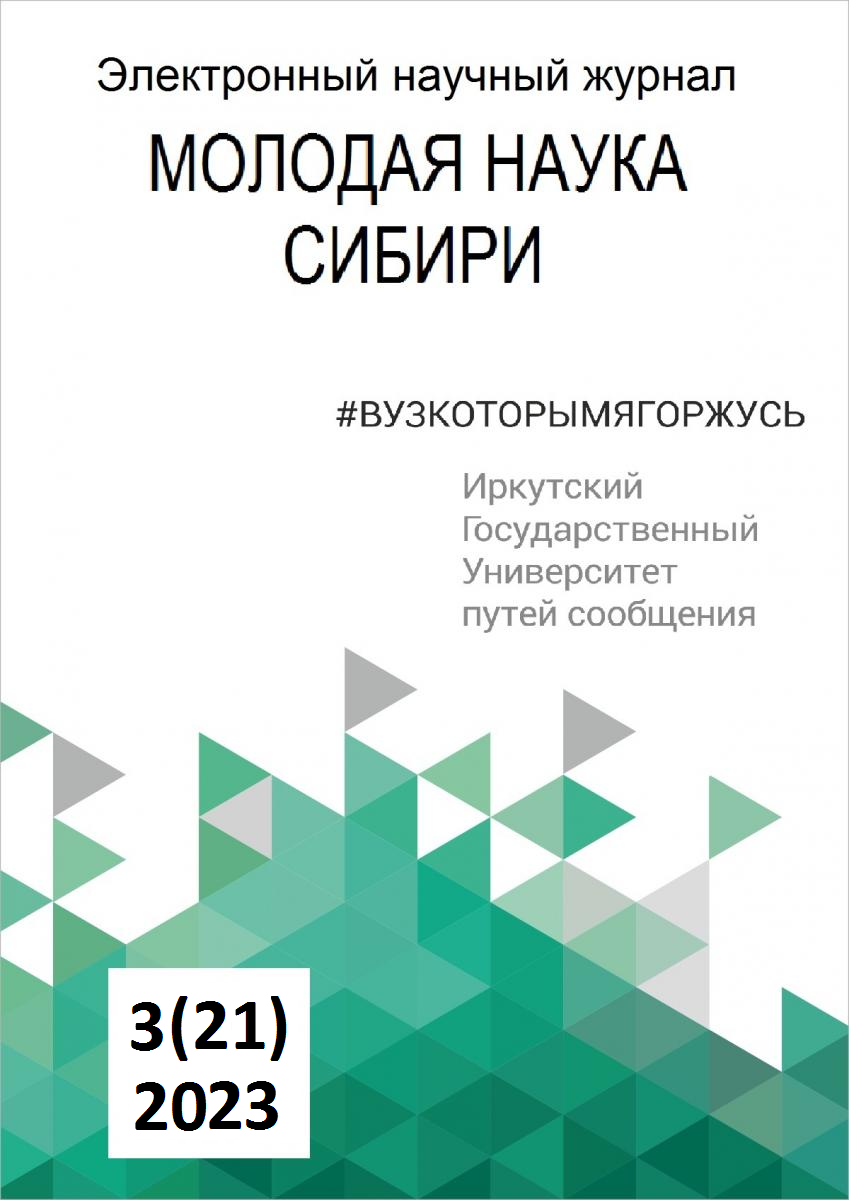DIASPORA LANGUAGES OF KRASNOYARSK TERRITORY: WRITING AND STANDARDIZATION
Keywords:
diaspora languages, Krasnoyarsk region, writing, standardization, literary form, graphic systemAbstract
Active migration processes taking place in various regions of the Russian Federation actualize the study of diasporic languages in the light of their social typology (N.B. Mechkovskaya). An important role in the preservation of these languages is played by such signs as the presence of writing and its duration, as well as the degree of standardization. Diasporic languages are widely studied in Russian science, but scientific works devoted to the languages of the diasporas of the Krasnoyarsk Territory are few. Among them there are no works devoted to their sociolinguistic characteristics, which actualizes the conducted research. As a result of the analysis and generalization of scientific works devoted to the diasporic languages of the most numerous ethnic groups of the Krasnoyarsk Territory, the classification of the languages under consideration according to such characteristics as: 1) the duration of the written tradition (young-written, old-written); 2) the duration of the existence of the literary form (young literary, literary with a long language tradition); 3) the presence or absence of their own writing and its basis (having a separate letter based on Cyrillic or Latin); 4) the degree of stability of the graphics system (with a stable graphics system, the graphics system is historically unstable). It is revealed that most of the diasporic languages of the Krasnoyarsk Territory of the most numerous ethnic groups are old-written, literary with a long linguistic tradition, have a Cyrillic script and a historically unstable graphic basis. The findings can be taken into account when planning and developing a language policy in the field of preservation of the languages in question, in particular, when organizing events held at the House of Friendship of the Peoples of the Krasnoyarsk Territory.
References
Мечковская Н.Б. Общее языкознание: Структурная и социальная типология языков: Учебное пособие для студентов филологических и лингвистических специальностей. 2-е изд. М.: Флинта: Наука, 2001. 312 с.
Скачкова И.И. Языковая политика и языковое планирование: определение понятий // Политическая лингвистика. 2015. № 1 (51). С. 126-131.
Всероссийская перепись населения 2020. Итоги Всероссийской переписи населения 2020 // Управление Федеральной службы государственной статистики по Красноярскому краю, Республике Хакасия и Республике Тыва [сайт]. URL: https://24.rosstat.gov.ru/folder/66693 (дата обращения 13.10.2023).
Языкознание. Большой энциклопедический словарь / гл. ред. В.Н. Ярцева. 2-е изд. М.: Большая Российская Энциклопедия, 1998. 688 с.
Кутилова Л.А. Проблемы украинских переселений и этнокультурных трансформа-ций в украинской среде в Приенисейской Сибири в исследованиях красноярских историков во второй половине ХХ – начале ХХI в. // Вестник Томского государственного университе-та. История. 2016. № 1 (39). С. 89-96.
Этноатлас: народы и народности, населяющие Красноярский край // Красноярский край: официальный портал [сайт]. URL: http://www.krskstate.ru/about/narod/etnoatlas (дата об-ращения 13.10.2023).
Казанцева Я.Н. Субъективные факторы выбора языка татарами, компактно прожи-вающими на территории Красноярского края // Вестник Кемеровского государственного университета. 2012. № 4-3 (52). С. 214-217.
Немцы в Сибири: история, язык, культура: материалы международной научной кон-ференции, г. Красноярск, 13-16 октября 2004 г. / Отв.ред. В.А. Дятлова. Красноярск: РИО ГОУ ВПО КГПУ им. В.П. Астафьева, 2005. 227 с.
Мундузбек А. Литературный язык как неотъемлемая часть общественного сознания // Приволжский научный вестник. 2016. № 8 (60). С. 101-104.
Musaev S. The Kyrgyz language // Проблемы современной науки и образования. 2016. № 20 (62). С. 56-57.
Казакбаева Г.А. Исторические условия языковых контактов узбекского языка // Вестник РУДН, серия Русский и иностранные языки и методика их преподавания. 2009. № 1. С. 63-69.
Космарский А. Смыслы латинизации в Узбекистане (конец ХХ — начало ХХI ве-ка) // Россия и мусульманский мир. 2004. № 5. С. 70-84.
Керимова А.А. Современный таджикский литературный язык: функционирование и развитие: дисс. … д-ра филол.наук. 10.02.08. Москва, 1997. 344 с.
Felde Olga V. The Ethno-Linguistic Situation in the Krasnoyarsk Territory at the Begin-ning of the Third Millennium // Journal of Siberian Federal University. Humanities and Social Sci-ences. 2011. Т. 4. № 7. С. 919-929.
Белых И.Н. К вопросу о витальности диаспорных языков Красноярского края // Экология языка и коммуникативная практика. 2019. № 3 (18). С. 1-10. URL: https://www.elibrary.ru/download/elibrary_41271433_66544930.pdf (дата обращения 13.10.2023).


